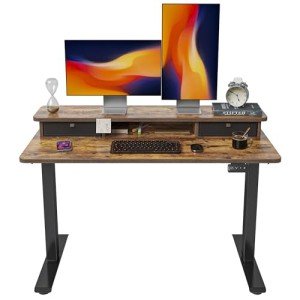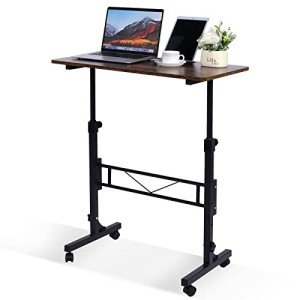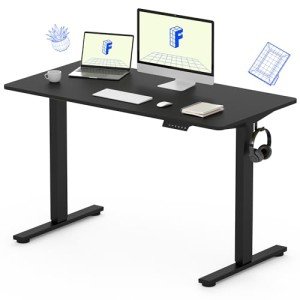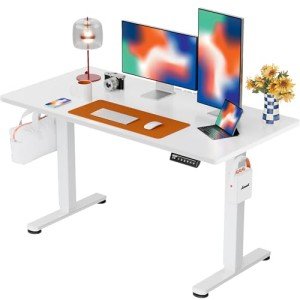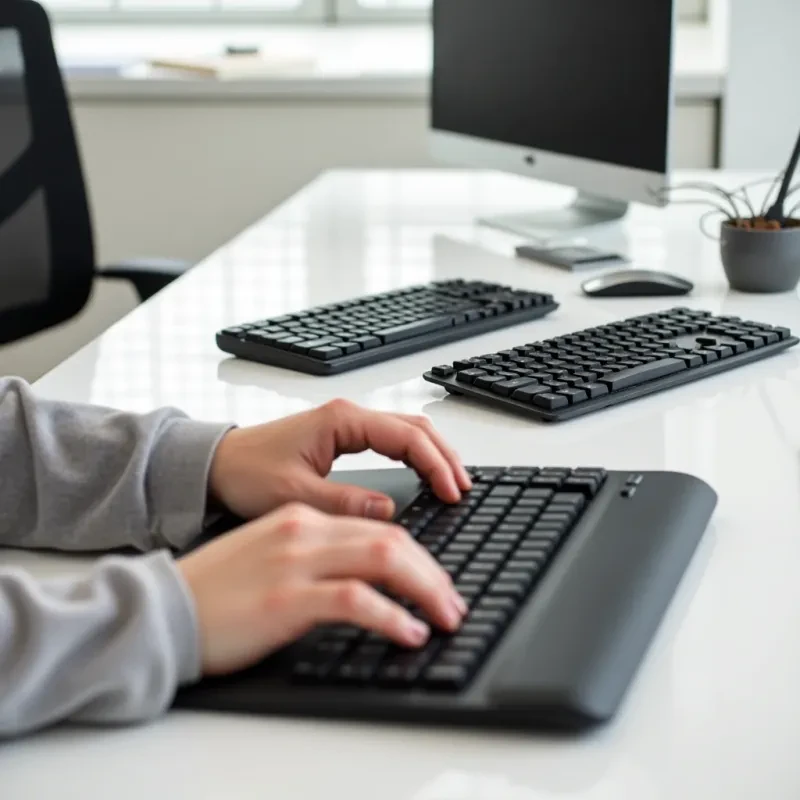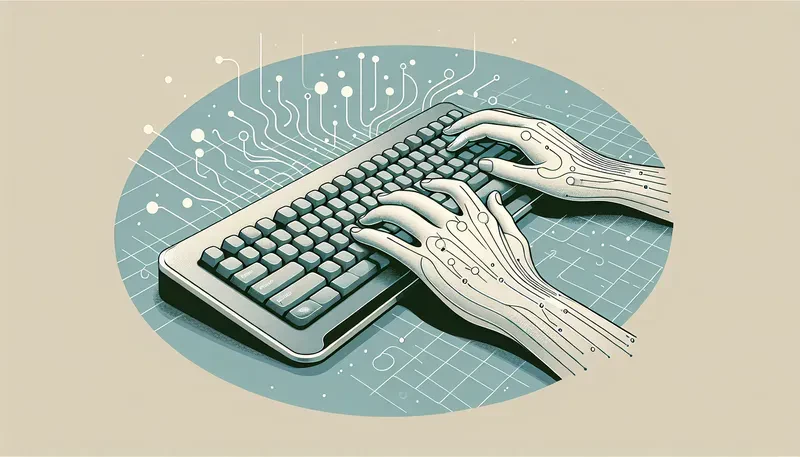In today's digital age, many people spend long hours at their desks, which can lead to discomfort and health issues. An ergonomic desk setup is crucial for maintaining proper posture and reducing strain on the body. By incorporating the right ergonomic accessories, individuals can create a more comfortable and productive workspace, whether in an office or home setting.
This article explores ten essential ergonomic desk accessories that can significantly enhance comfort and well-being. From ergonomic chairs and standing desks to monitor arms and task lighting, these items are designed to support the body and improve the overall work environment. By investing in these accessories, users can reduce the risk of repetitive strain injuries and boost their productivity throughout the workday.
Ergonomic Chair
An ergonomic chair is designed to provide optimal support and comfort for long hours of desk work. It helps maintain proper posture and reduces the risk of musculoskeletal issues. These chairs are essential for creating a comfortable home office environment.
Key Features of an Ergonomic Chair
Ergonomic chairs typically include adjustable seat height, lumbar support, and armrests. The seat pan should be comfortable and fit the user's shape, with a waterfall front edge to prevent pressure on the thighs. A five-pedestal base with casters ensures stability and mobility [1].
Benefits of an Ergonomic Chair
Using an ergonomic chair has several advantages. It supports good posture, reduces the risk of neck and back pain, and improves overall comfort. These chairs also help relieve hip pressure and enhance blood circulation, leading to increased productivity [2].
How to Choose the Right Ergonomic Chair
When selecting an ergonomic chair, consider factors such as adjustability, lumbar support, and seat depth. Ensure the chair fits your body size and allows for proper posture with your feet flat on the floor. Test the chair for at least 60-120 minutes to evaluate its comfort level [1].
Standing Desk
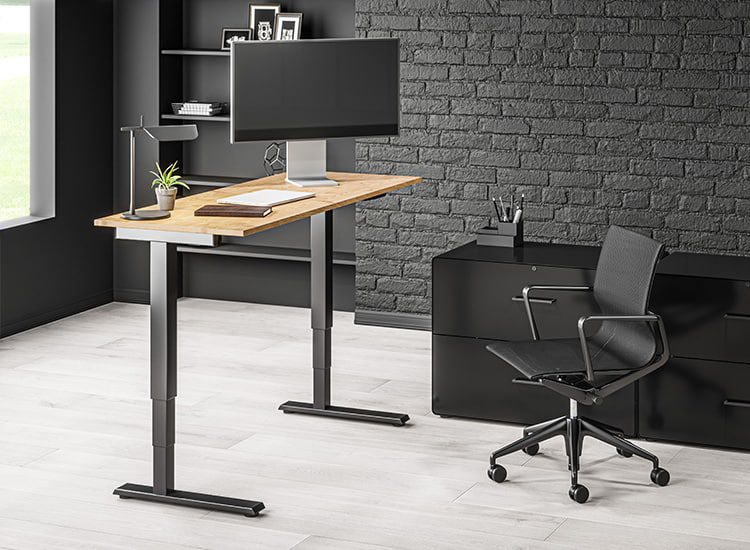 Image Source: The Standing Desk
Image Source: The Standing Desk
A standing desk is an ergonomic desk that allows users to alternate between sitting and standing positions throughout the workday. It offers numerous advantages, including improved posture, increased energy levels, and enhanced productivity. Studies have shown that using a standing desk can help burn more calories and reduce the risk of obesity, diabetes, and cardiovascular disease [3].
Advantages of a Standing Desk
Standing desks have been linked to several health benefits:
-
Reduced back pain and improved posture
-
Increased energy and productivity
-
Lower risk of obesity, diabetes, and heart disease
-
Better mood and reduced stress levels
Types of Standing Desks
There are various types of standing desks available:
-
Fixed-height standing desks
-
Manual adjustable desks
-
Electric adjustable desks
-
Desktop converters
How to Use a Standing Desk Effectively
To maximize the benefits of a standing desk:
-
Alternate between sitting and standing every 30-60 minutes
-
Maintain proper posture while standing
-
Use an anti-fatigue mat for comfort
-
Gradually increase standing time to build endurance
Monitor Arm
A monitor arm is a versatile ergonomic accessory that enhances comfort and productivity in the home office. It allows users to adjust their screen's position, reducing neck and eye strain. Monitor arms offer flexibility in height, tilt, and rotation, enabling users to find the optimal viewing angle [4]. This adjustability promotes proper posture and reduces the risk of musculoskeletal issues.
Benefits of Using a Monitor Arm
Monitor arms provide several advantages for ergonomic desk setups:
• Improved posture and reduced neck strain • Enhanced workspace organization • Increased desk space • Better screen positioning for reduced eye fatigue • Flexibility for sit-stand transitions
How to Choose the Right Monitor Arm
When selecting a monitor arm, consider:
• Monitor size and weight compatibility • Desk thickness and mounting options • Range of motion and adjustability • Cable management features • Quality and durability of construction
Proper Monitor Arm Setup
To optimize your monitor arm:
• Position the top of the screen at or slightly below eye level • Place the monitor about an arm's length away • Adjust tilt to reduce glare and maintain proper viewing angle • Use cable management features to keep wires organized
Ergonomic Keyboard
An ergonomic keyboard is designed to minimize muscle strain and reduce the risk of repetitive strain injuries. These keyboards feature a curved or split layout that allows for a more natural hand position while typing.
Features of an Ergonomic Keyboard
Ergonomic keyboards typically include: • Split or curved design • Adjustable tenting angle • Wrist rest for support • Customizable key layout
Benefits of Using an Ergonomic Keyboard
Using an ergonomic keyboard can lead to: • Reduced wrist and shoulder strain • Improved typing comfort • Increased productivity • Lower risk of repetitive stress injuries
Popular Ergonomic Keyboard Models
Some well-known ergonomic keyboards include: • Logitech Wave Keys • Kinesis Freestyle Edge RGB • ErgoDox EZ • Microsoft Sculpt Ergonomic Keyboard
These keyboards offer various features to enhance comfort and promote proper posture in the home office setting.
Ergonomic Mouse
An ergonomic mouse is designed to reduce strain on the hand, wrist, and arm during prolonged computer use. These mice come in various shapes and sizes, catering to different hand sizes and preferences. The most common types include vertical mice, trackballs, and hybrid designs. Each type offers unique benefits for users seeking to improve their comfort and reduce the risk of repetitive strain injuries in their home office setup.
Types of Ergonomic Mice
Ergonomic mice come in several forms:
-
Vertical mice: These place the hand in a "handshake" position, reducing wrist pronation.
-
Trackballs: Stationary devices that use a ball for cursor movement, minimizing arm motion.
-
Hybrid mice: Combine features of traditional and ergonomic designs for versatility.
Benefits of Using an Ergonomic Mouse
Using an ergonomic mouse has several advantages:
• Reduces wrist strain and the risk of repetitive stress injuries • Improves comfort during extended computer use • Promotes a more natural hand and arm position • Can alleviate existing wrist pain and arthritis discomfort [5]
How to Choose the Right Ergonomic Mouse
When selecting an ergonomic mouse:
• Consider your hand size and dominant hand • Test different types to find the most comfortable fit • Look for adjustable features and programmable buttons • Ensure compatibility with your computer and operating system
Wrist Rest
A wrist rest is an ergonomic accessory designed to support the wrists during keyboard and mouse use. It helps maintain a neutral wrist position, reducing strain and discomfort in the home office setup.
Types of Wrist Rests
Wrist rests come in various forms, including: • Keyboard wrist rests: Long, rectangular pads that match the keyboard's width • Mouse wrist rests: Smaller pads designed for use with a mouse • Gel-filled or memory foam options for enhanced comfort • Hard surface rests made of materials like wood for durability
Benefits of Using a Wrist Rest
Using a wrist rest can: • Alleviate tension in the neck, shoulders, and upper arms • Reduce the risk of repetitive strain injuries • Promote proper posture while typing • Provide a comfortable surface for resting between typing sessions
Proper Wrist Rest Placement
To maximize the benefits of a wrist rest: • Position it to support the heel of the palm, not the wrist itself • Align the wrist rest with the keyboard's height and slope • Use it intermittently, not continuously while typing • Ensure it doesn't impede natural hand movements
Footrest
A footrest is an essential ergonomic accessory that provides support and comfort for the feet while sitting at a desk. It helps maintain proper posture and reduces pressure on the lower back and legs. Footrests come in various types, including adjustable height and angle options, rocking designs, and those with massage features. They can be particularly beneficial for individuals whose feet don't reach the floor when seated at their desk. Using a footrest can alleviate discomfort, improve circulation, and promote active sitting by encouraging subtle movements throughout the day. When choosing a footrest, consider factors such as adjustability, stability, and material to ensure it complements your home office setup and enhances your overall ergonomic workspace.
Lumbar Support Cushion
A lumbar support cushion is an essential ergonomic accessory for maintaining proper posture and reducing back pain in the home office. These cushions are designed to support the natural curve of the spine, promoting comfort during extended periods of sitting.
Benefits of a Lumbar Support Cushion
Using a lumbar support cushion can help alleviate back pain, improve posture, and enhance overall comfort while working. It supports the spine's natural curvature, allowing back muscles to relax and reducing stress on the lumbar region [6]. This can lead to improved productivity and focus throughout the workday.
Types of Lumbar Support Cushions
Lumbar support cushions come in various shapes and materials. Common types include memory foam cushions, gel-infused options, and those with adjustable straps for secure positioning. Some cushions feature breathable mesh covers for enhanced airflow and comfort during long periods of use.
How to Use a Lumbar Support Cushion
To maximize the benefits of a lumbar support cushion, position it in the small of your back, aligning it with the natural curve of your spine. Ensure your hips are pushed back in the chair and adjust the cushion's height as needed for optimal support [7]. Regular use can help maintain proper posture and reduce the risk of developing back pain associated with prolonged sitting.
Anti-Fatigue Mat
An anti-fatigue mat is an essential ergonomic accessory for standing desks. These mats are designed to reduce fatigue caused by prolonged standing on hard surfaces. They provide cushioning and support, promoting subtle movements in leg muscles, which improves blood circulation and reduces discomfort [8]. Anti-fatigue mats can decrease foot and lower limb disorders for workers who stand for extended periods, making them ideal for home office setups with standing desks.
Benefits of an Anti-Fatigue Mat
Using an anti-fatigue mat offers several advantages: • Reduces fatigue and muscle ache • Improves blood circulation • Decreases the risk of musculoskeletal disorders • Enhances comfort and productivity
Types of Anti-Fatigue Mats
Anti-fatigue mats come in various materials: • Foam: Provides moderate support and cushioning • Gel: Offers excellent pain relief but less supportive • Rubber: Highly elastic and shock-absorbing, ideal for most environments • PVC: Durable and suitable for harsh conditions
How to Choose the Right Anti-Fatigue Mat
When selecting an anti-fatigue mat: • Consider the mat's thickness and compression deflection • Choose a material suitable for your environment • Ensure proper size and non-slip features • Look for beveled edges to prevent tripping hazards
Task Lighting
Task lighting is essential for enhancing comfort and productivity in the home office. It provides focused illumination for specific activities, reducing eye strain and improving visibility. Proper task lighting can significantly impact an individual's ability to work efficiently and comfortably for extended periods.
Importance of Proper Lighting
Adequate task lighting is crucial for maintaining eye health and preventing fatigue. It helps reduce the risk of headaches and decreases stress and anxiety levels [9]. Studies have shown that quality LED task lighting can lower the risk of headaches and alleviate stress [9]. Additionally, proper lighting can improve posture and reduce discomfort, as demonstrated in a 2014 study on the benefits of adjustable task lighting [10].
Types of Task Lighting
There are various types of task lighting available for the home office:
-
Desk lamps: Adjustable desk lamps with LED bulbs provide focused illumination for reading and writing tasks.
-
Under-cabinet lights: These are ideal for illuminating kitchen countertops and workspaces.
-
Pendant lights: Hanging lights can provide targeted illumination for specific work areas.
How to Position Task Lighting
To maximize the benefits of task lighting:
-
Place the light source at a 30-degree angle to avoid glare [11].
-
Position task lights 14 to 24 inches above the work surface for optimal illumination [11].
-
Use adjustable lamps to direct light where needed and accommodate different tasks.
By incorporating proper task lighting into the home office setup, individuals can create a more comfortable and productive work environment.
Conclusion
The integration of ergonomic desk accessories has a significant impact on creating a comfortable and productive home office environment. From ergonomic chairs and standing desks to monitor arms and task lighting, these tools work together to support proper posture, reduce physical strain, and enhance overall well-being. By investing in these accessories, individuals can minimize the risk of work-related injuries and boost their efficiency throughout the day.
To wrap up, the key to a successful ergonomic setup lies in selecting the right combination of accessories tailored to individual needs and preferences. As more people continue to work from home, the importance of a well-designed workspace cannot be overstated. By prioritizing ergonomics, workers can create a healthier, more comfortable environment that supports long-term productivity and job satisfaction.
FAQs
How can I enhance the comfort of my work desk?
To improve the comfort of your work desk, personalize your space to boost morale and productivity. Keep your desk free of clutter, add some plants for a touch of green, upgrade to an ergonomic chair, ensure adequate lighting, utilize your wall space effectively, and incorporate colors to enhance the esthetic appeal of your workspace.
What ergonomic aspects should be considered when setting up a desk?
When setting up your desk ergonomically, ensure that your legs can comfortably fit under the desk with your feet flat on the floor, allowing enough space to cross your legs if desired. Your desk should be set so that the angle between your forearm and upper arm is between 90 degrees and 110 degrees, with your upper arms aligned with your torso.
What constitutes the best ergonomic setup for a desk?
The optimal ergonomic desk setup includes positioning the desk at a height that allows your arms to be parallel to the floor while typing. The monitor should be placed about an arm's length away and adjusted so the top of the screen is at or just below eye level.
What equipment is essential for a comfortable workstation?
A comfortable workstation should include several key pieces of equipment: an ergonomic office chair to reduce the risk of back pain, a footrest to ensure your feet can rest flat on the floor, a screen riser, a document holder, an ergonomic keyboard, a vertical mouse, a sit-stand workstation, and an anti-fatigue mat.
References
[1] - https://www.safety.pitt.edu/ehs/ergonomics/how-choose-ergonomic-chair
[2] - https://www.allstoragesystems.com.au/resource/6-health-benefits-ergonomic-chairs/
[3] - https://www.healthline.com/nutrition/7-benefits-of-a-standing-desk
[4] - https://www.chairoffice.co.uk/blog/are-monitor-arms-worth-it/
[5] - https://www.goldtouch.com/7-ergonomic-mouse-benefits/
[6] - https://sundaycitizen.co/blogs/news/here-s-why-you-should-opt-for-a-lumbar-pillow?srsltid=AfmBOorR4bHixeyvDWaidYI0bsnNs4A7Jg03k4jmb47sLWKDWvQ6-9
[7] - https://www.youtube.com/watch?v=QLgByJ2V-9I
[8] - https://www.wearwell.com/blog/post/importance-of-anti-fatigue-mats
[9] - https://viribright.com/pages/4-reasons-why-you-need-an-led-desk-lamp?srsltid=AfmBOor6G3sk-GLuCt4IHaK4kt1jCmowHNe26N_JKKmCG3--pPpLBkP9
[10] - https://www.hofy.com/blog/tasklighting
[11] - https://perfectpicturelights.com/blog/task-lighting-for-interior-design

